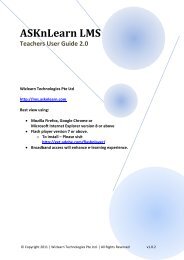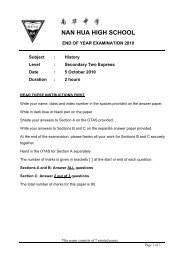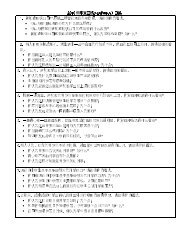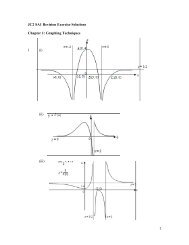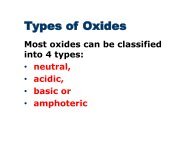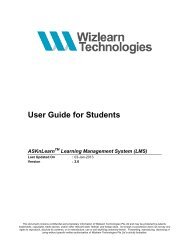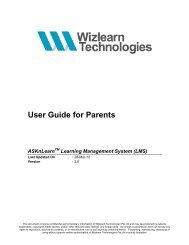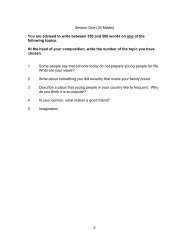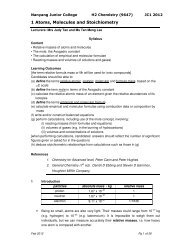Suggested Answers of BT2 Revision Package - ASKnLearn
Suggested Answers of BT2 Revision Package - ASKnLearn
Suggested Answers of BT2 Revision Package - ASKnLearn
- No tags were found...
You also want an ePaper? Increase the reach of your titles
YUMPU automatically turns print PDFs into web optimized ePapers that Google loves.
(b) INTRODUCTIONTo address the problem <strong>of</strong> negative externalities in <strong>of</strong> air travel which results in overconsumption,the government can adopt a few measures to try to achieve the sociallyoptimal level. While this may be possible in theory , in practice these measures havetheir limitations as well.BODYFirstly, the government can impose taxes. In many countries these are flight taxesimpose and these taxes are included when an air-ticket is purchased. The flight taxesincreases the cost <strong>of</strong> production for airlines, forcing them to take into account <strong>of</strong> theexternal costs <strong>of</strong> flying. In Figure 3, this will cause a divergence in the MSC and MPCline. MSC will shift leftwards. If implemented correctly and accurately, the tax should beequivalent to external costs <strong>of</strong> flying. In this way, we will reach a socially optimal level <strong>of</strong>flying. The external costs (MEC) which will cause the MSC curve to shift upwards will hitthe point where the socially optimal level <strong>of</strong> output is achieved again at Q * . This is thepoint where the socially optimal level is achieved.Costs/Benefits MSC MPC Tax MPB MSB Q * Q p Qty (Air travel)



